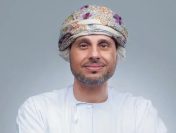“There are many possible futures ahead of us. The road we’ll end up taking is still ours to choose.” With these two sentences, Jonathan (JC) Oliver, global creative officer of Unlockd and speaker at BrainScape 2017, set the tone for PHD’s annual conference in Dubai.
The eighth edition of PHD’s annual event explored the theme ‘Merge: The closing gap between technology and us’, inspired by the network’s global publication, also titled Merge. Elda Choucair, CEO of PHD MENA, Dave Coplin, founder of The Envisioners, and Dr. Noah Raford, Chief Operating Officer of the Dubai Future Foundation, championed collaboration rather than conflict in their talks. They shared a common view that this technological boom is not to be feared but embraced.
They painted a picture of greater collaboration through the growing reliance on technology, between man and machine, of course, but also between departments in companies and between the public and private sectors. Dave Coplin spoke about how we must ‘imbue’ the right transformational culture in each company, giving rise to ‘intelligent organisms’ rather than organizations.
Dr. Noah Raford emphasized how governments do and must continue to foster a culture of innovation, something quite evident in Dubai. “Using technology to push ourselves to even greater heights, collaboration between the public and private sectors will converge with transformative innovation and human need to shape the future of our societies,” he said.
Another reason to welcome the rise of ‘intelligent’ machines that learn from observation and analysis is that they will improve our capabilities through greater automation of cognitive processes. With data seen as the renewable fuel source of the future, Mr Coplin suggested that the third computer age belongs to AI, as humans no longer instruct computers, but ask them to learn instead. “In the same way that language doesn’t follow rules but patterns, computer capability relies on probability. Adding this to human ability through collaboration will create the best possible outcome.”
The ease of interaction with machines will keep on improving as well, as we will communicate with them in an almost human way. “Not only will we interact with AI-powered devices, like the Olly Smart Robot with its evolving personality, conversationally, they will become more and more a part of us, ultimately becoming insideables or implants in our bodies,” explained Ms Choucair.
So, what place is there for brands in all this? Ms Choucair referenced nine areas to watch in her presentation, focusing on the emergence of mixed reality and intelligent layers, or data overlays on the reality around us. Accessed through augmented reality (AR) glasses and then contact lenses, these layers will be opportunities for brands to embed contextually and individually relevant messages, services and information.




